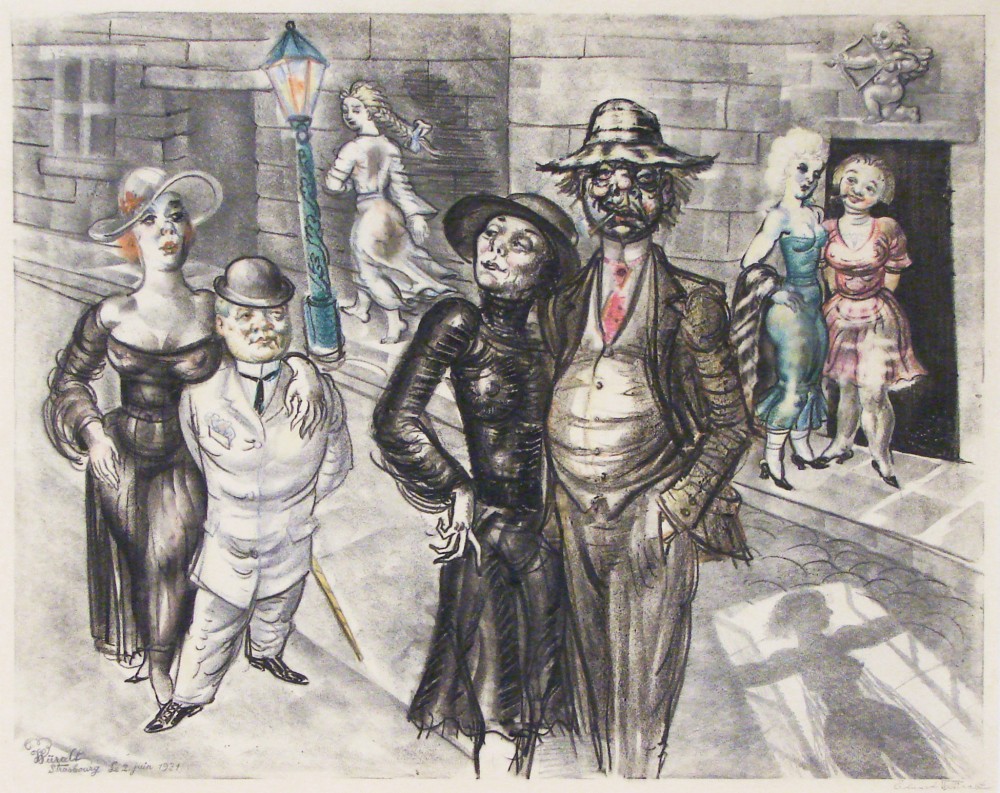In 1931, he had enough knowledge not to fend off a meeting with Nelly Stulz, an art collector, artist and poet, who lived in Strasbourg and who organised the sale of Wiiralt’s works as well as his personal exhibition in May 1932. So Wiiralt was mainly in Strasbourg from 1931–1933 and this time is characterised by a certain stability and brightness that came into his life. The change of a decade is also significant in his works, as his favourite grotesque style characteristic to his 20s, was more and more replaced by a serious and spiritual (abstinent) style.
“Scene on the Street” is in any case still thoroughly grotesque as well as sensual. You can feel the influence of Wiiralt’s favourite, Otto Dix. All of the characters parading on the surface of this picture are like separate stories and the psychologically as well as compositionally attractive view interlace from their relationships and connections. If one is to set oneself the unenviable task of finding the protagonist of the work, then for me it is without a doubt the fingers that can be seen in the work. Eduar Wiiralt’s love toward detail is generally known, but the hands and fingers became especially expressive and pronounced in his works in the 1930s. Of course the theatre of life going on in the picture is not less important, which Wiiralt depicts from a distance, but still with sympathy.
.png)
